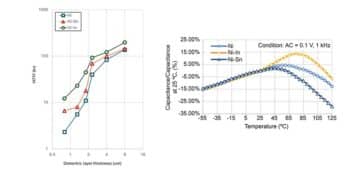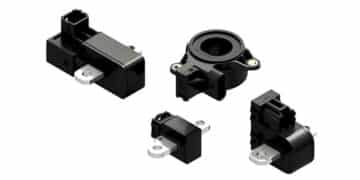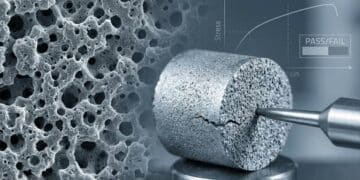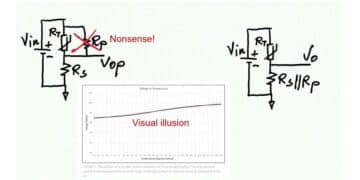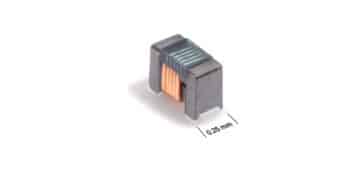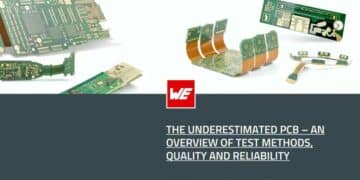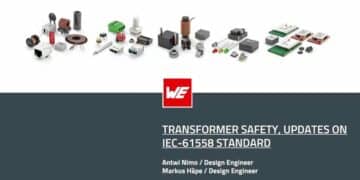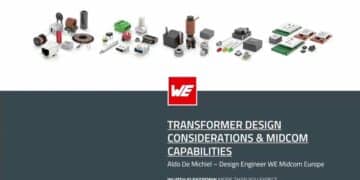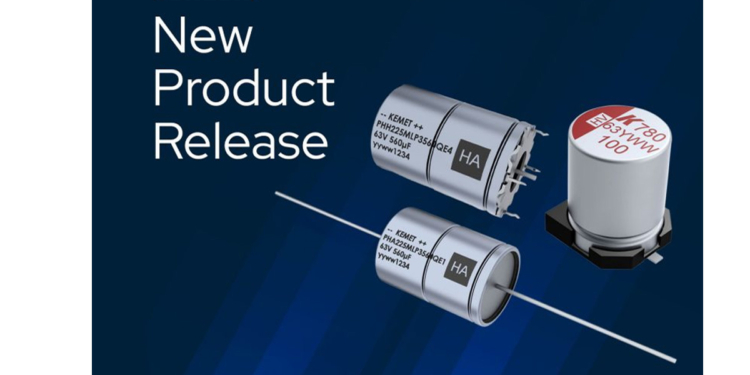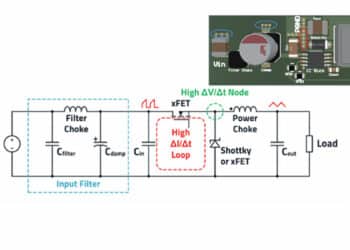KEMET, a subsidiary of Yageo Corporation (“Yageo”) (TAIEX: 2327) and leading global supplier of electronic components, announces the launch of three hybrid aluminum polymer capacitor series: A780, PHA225, and PHH225.
These AEC-Q200 qualified capacitors offer a combination of highly conductive polymer technology and liquid electrolytic material in a hybrid design, resulting in outstanding electrical performance for automotive and industrial applications. This launch aligns with the growing vehicle electrification product market, driven in part by a rising need for 48V architecture in mild hybrid electric vehicles (MHEV). According to a September 2020 report by Markets and Markets, the vehicle electrification market is projected to grow at a CAGR of 11.9% to reach USD $129.6 billion by 2025 from USD $73.7 billion.*
The A780 series is KEMET’s first release of a surface mount (V-Chip) hybrid aluminum polymer capacitor. Both liquid aluminum electrolyte and solid polymer materials are housed in a cylindrical aluminum can and when combined, provide greater advantages such as a higher ripple current, lower equivalent series resistance (ESR), lower leakage current, and exceptional self-healing capability than standard solid polymer aluminum capacitors with no liquid electrolyte. These capacitors can withstand heavy vibrations (up to 30g), meeting the stringent design requirements for automotive powertrain and industrial applications, including engine control units, DC/DC converters, 48V inverters for MHEV, switched-mode power supply (SMPS) and computer voltage regulator modules (VRM).
Further advancing hybrid aluminum polymer capacitor technology, the PHA225 and PHH225 with an axial and radial crown design also offer the same combination of highly conductive polymer and liquid electrolytic material as the A780 series. These capacitors can withstand temperatures up to 140°C, provide extremely high ripple current capability and self-healing performance. The hybrid construction of polymer and liquid electrolytic provides extremely low and stable ESR across all temperature ranges, thus extending its operating lifetime.
The PHA/PHH 225 capacitor has a small size and high ripple current per unit volume, which is valuable when designing-in for automotive and industrial technologies, such as 48V automotive inverters. By using smaller, high power density hybrid aluminum capacitors in parallel for an existing 48V automotive inverter design, engineers can reduce the number of required components and still maintain high ripple current performance. The PHA225 and PHH225 hybrid series is ideal for designing in high power automotive applications, including DC-Link for 48V inverters, cooling fans, water pumps, power steering, and braking and injection systems.
“The design of the A780, PHA225, and PHH225 series incorporates KEMET’s proprietary hybrid polymer technology and electrolyte material,” said Rui Monteiro, KEMET Director of Aluminum Electrolytic Technology. “These advancements in our polymer and aluminum offering supports the growing automotive electrification trend and provides design engineers with reliable solutions for decoupling, smoothing, filtering, and power conversion.”
The A780, PHA225, and PHH225 series are available immediately via KEMET distributors. To learn more about their capabilities and applications, visit https://ec.kemet.com/aluminum/.
* Source: “Vehicle Electrification Market by Product (Start-Stop, PTC, EPS, Electric Air Conditioner, ISG, Starter Motor, Alternator, Actuator, Electric Pump-Vacuum, Oil & Water), 48V, ICE, BEV, HEV, PHEV, Vehicle Type, and Region – Global Forecast to 2025,” Markets and Markets, September 2020
